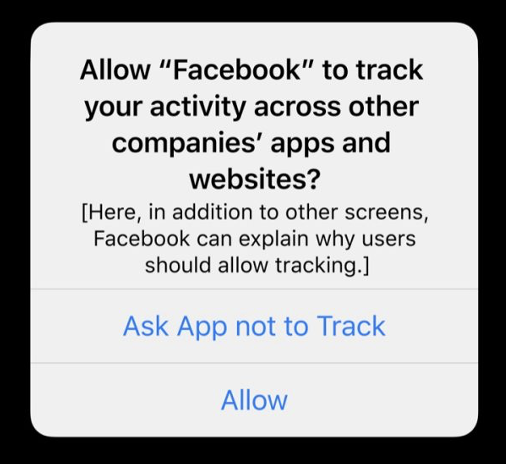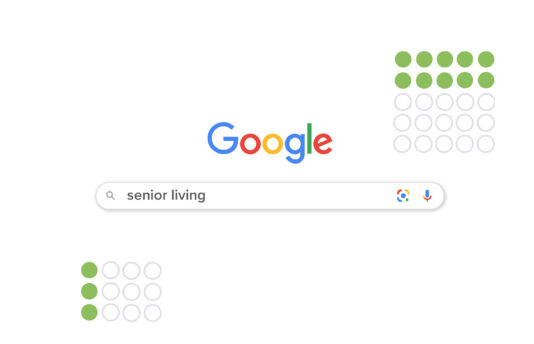With the world of data privacy constantly evolving, platforms have begun rolling out new updates to comply. In order to maintain a successful online presence, here are three of the latest updates to consider:
Google Analytics 4
Google Analytics 4 was announced and released in late October 2020. The platform relies more heavily on machine learning than Universal Analytics, which contributes to the continued relevance of analytics in a post-cookie world.
What is it?
Due to its increased emphasis on machine learning models, Google Analytics 4 can provide marketers with automatic updates of new and significant trends detected in your website data. This will help you anticipate upcoming trends, allowing time for preparation to make changes to your marketing strategy. Rather than spending time analyzing to predict what your target users may or may not do, Google Analytics 4 does it for you. Google is saying that this will provide better insights in order to allow advertisers to improve their ROI. Google Analytics 4 allows integration with both websites and applications. Conversions can be tracked without additional coding or setting up an event in Tag Manager.
Why should I care?
Google Analytics 4 puts more of an emphasis on cross-device conversions, including from YouTube videos, email and organic channels. This allows marketers to optimize based on where their conversions are coming from and see the full impact of their strategy. Data is more centered on the user rather than dividing by device or platform. Reports are also reorganized, focusing more on the customer lifecycle than in Universal Analytics reporting.
Google Analytics 4 also provides assistance when it comes to compliance with GDPR and CCPA, with separate opt-ins for ads and analytics for users. With cookies being phased out, this is critical to maintaining the amount of data available to advertisers. Previously, users were able to simply opt out of any type of data collection, severely limiting the available information. If users request to have data deleted, Google Analytics 4 comes with easier capabilities and a preview mode to make sure they want to delete data before it is permanently gone.
When should I get started?
As cookies on Google Chrome will be phased out by 2022, it will be important to add Google Analytics 4 to your website to run alongside (rather than replace) the original “universal” Google Analytics code. This will allow enough time to implement it and fix any issues without risking data loss, as well as compare both data sets to understand how best to leverage each.
The Apple iOS 14 Privacy Update

What is it?
In late April 2021, Apple rolled out a privacy update for iPhones and iPads running iOS14 that will make it harder for third-party advertisers to target and track users with Apple’s “Identifier for Advertisers” (IDFA). This feature includes an additional step where the user must “opt in” to allow third-party advertisers (such as Google and Facebook) to track browsing activity across mobile apps and websites. Previously, iPhone and iPad users could opt out of this tracking, but all iOS devices came with that feature disabled.
What does this mean for me?
The sky is not falling, but the way we track digital marketing activity will have to shift:
- New ways of measuring. Facebook has said it will leverage statistical models, including their “Aggregated Event Measurement” protocol, to anticipate the loss of IDFA data targeting and tracking. Facebook advertisers would still be able to target ads using their audience profiling tools; however, some of the reports would no longer be available based on the lack of iOS14 tracking data.
- Measuring conversions. Campaigns with strong conversion goals can still be tracked leveraging Google Analytics event tracking and UTM codes on your website. This will yield insights on ads that resulted in a conversion and which creative, ad set or campaign delivered that result.
- First-party data. Building your first-party data set will be more important than ever as more privacy-driven regulations take hold. Generating more conversions from gated content will help enhance your list, and this data may be leveraged to create custom audiences in Facebook for retargeting campaigns as well as other outreach programs.
- Mobile campaigns. Segmenting campaigns for iOS and Android users will create opportunity for observations. Modeling marketing data off these distinct audiences will help provide insights for a potential shift in iOS data loss.
What’s next?
Changes to Internet privacy standards will be a way of life for the foreseeable future. Web browser cookie data that is also used in targeting and tracking potential advertising audiences is next up for privacy regulation. Google has already announced that in 2022, its Chrome web browser will be doing away with cookies. The good news is that in January, Google also released information on potential cookie replacements that have yielded at least 95% of conversions per dollar that they see with cookies.
Privacy-first marketing is here to stay. And while it will create some disruption, honoring the privacy of users while delivering truly customized experiences is something we are proud to get behind.
Google’s Core Web Vitals
Core Web Vitals is the first major Google update of 2021 and is the culmination of changes made during previous Google core updates in May and December 2020. This is a more technical update and introduces new ranking factors for organic pages.
What is it?
Core Web Vitals refers to vital signs available on all pages across the web, measurable as part of user experience. The current main metrics measured as part of Core Web Vitals all center around the speed of a page:
- Web Page Loading: Measuring the performance of the page as it loads
- Interactivity: Measuring how quickly a user is able to interact with your page
- Visual Stability: Measuring the stability of the page as it finishes loading
The algorithm update is set to take effect in May 2021, though an exact date has not been announced.
How can I tell where my website stands with Core Web Vitals?
Because Google announced this update was coming a year ago, they provided us with tools to monitor where websites succeed and where they can improve. A report is available in Google Search Console that shows any URLS that are flagged as having issues or broken links, as well as URLs that could be improved and URLs that are doing well with the update. Reports are available for both the mobile and full desktop versions of your site, which also flag dates of events that could affect your data and search presence.
What can I do to improve my website’s presence under Core Web Vitals?
There are many ways you can improve your site’s presence when it comes to page speed. By running tests on programs like Pingdom and Google PageSpeed Insights, you can see how quickly your site loads and a range of suggestions for improvements to better your score, including compressing images.
If you have any questions about these updates, please do not hesitate to reach out.











